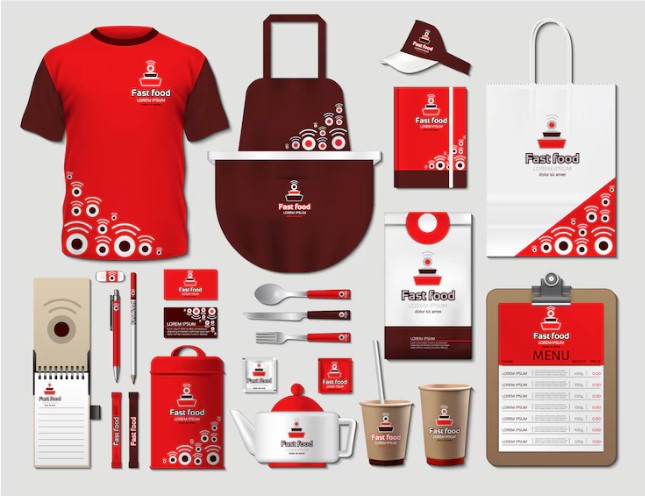To create brand value for your e-commerce business, focus on delivering exceptional customer experiences and maintaining consistent brand messaging. Use high-quality visuals and engage with your audience.
Building brand value is essential for the long-term success of your e-commerce business. It helps differentiate your brand from competitors and fosters customer loyalty. Start by understanding your target audience and tailoring your products and services to meet their needs.
Consistency in branding across all platforms ensures a cohesive image. High-quality product visuals and compelling descriptions can enhance your brand’s appeal. Engage with your audience through social media and personalized marketing efforts. Collect and act on customer feedback to continually improve.
By prioritizing customer satisfaction and brand consistency, you can create a strong and valuable brand presence.

Identify Your Audience

Creating brand value for your e-commerce business begins with understanding your audience. Knowing your audience allows you to tailor your products, marketing strategies, and customer service to meet their needs. This step is crucial for building a loyal customer base and enhancing your brand’s reputation.
Target Demographics
To effectively identify your target demographics, focus on the following key factors:
- Age: Determine the age range of your potential customers. Are they teens, young adults, or older adults?
- Gender: Are your products aimed at men, women, or both?
- Location: Identify the geographic areas where your customers live. Are they in urban or rural areas?
- Income Level: Understand the income bracket of your audience. Are they budget-conscious or willing to spend more?
- Occupation: What do your potential customers do for a living? This can influence their purchasing behavior.
Analyzing these factors can help you create a detailed customer profile. Here’s an example table to illustrate:
| Factor | Details |
|---|---|
| Age | 25-34 |
| Gender | Female |
| Location | Urban |
| Income Level | Middle to High Income |
| Occupation | Professionals |
Understanding these demographics helps you tailor your marketing campaigns. You can create personalized content that resonates with your audience. This strategy increases engagement and builds brand loyalty.
Customer Preferences
Knowing your audience’s preferences is key to offering products they love. Here are some ways to identify customer preferences:
- Surveys and Feedback: Conduct surveys to ask customers about their likes and dislikes.
- Purchase History: Analyze past purchases to see what products are most popular.
- Social Media: Monitor social media platforms to see what your audience is talking about.
- Website Analytics: Use tools like Google Analytics to track customer behavior on your site.
Consider creating a preference table to keep track:
| Preference | Details |
|---|---|
| Product Type | Eco-friendly products |
| Price Range | $20-$50 |
| Shopping Frequency | Monthly |
| Preferred Channels | Instagram, Facebook |
By understanding customer preferences, you can stock the right products and create effective marketing campaigns. This approach ensures that your audience finds what they need, leading to higher satisfaction and repeat business.
Craft Your Brand Story

Creating brand value is crucial for any e-commerce business. One key step is to craft your brand story. A compelling brand story helps you connect with customers on a deeper level. It differentiates your brand from competitors and builds trust. Let’s explore how to craft a brand story by focusing on two essential elements: the mission statement and emotional connection.
Mission Statement
A mission statement defines your brand’s purpose. It is the heart of your brand story. A clear mission statement helps customers understand what you stand for.
Here are some steps to create a compelling mission statement:
- Identify Core Values: List your brand’s core values. These should reflect what your brand believes in.
- Define Your Purpose: Answer why your brand exists. What problem are you solving?
- Keep It Simple: Use simple language. Avoid jargon. Make it easy to understand.
A good mission statement is short but powerful. It should inspire both your team and your customers. Here is an example:
| Brand | Mission Statement |
|---|---|
| Brand A | To deliver eco-friendly products that improve everyday life. |
| Brand B | To provide innovative tech solutions for a connected world. |
Emotional Connection
Creating an emotional connection with your customers is vital. It makes your brand memorable and fosters loyalty. Customers who feel connected to your brand are more likely to return.
Here are some ways to build an emotional connection:
- Tell Personal Stories: Share stories about your brand’s journey. Include challenges and successes.
- Show Empathy: Understand your customers’ needs and feelings. Show that you care.
- Engage with Customers: Use social media to interact with your audience. Respond to comments and messages.
Use visuals to enhance the connection. Pictures and videos can convey emotions better than words. Showcase customer testimonials and user-generated content. This builds trust and authenticity.
A strong emotional connection can turn customers into brand advocates. They will share their positive experiences with others, further enhancing your brand value.
Develop A Unique Visual Identity

Creating brand value for your e-commerce business requires a consistent and memorable visual identity. Developing a unique visual identity helps your brand stand out and build trust with your audience. This means carefully crafting elements like your logo design and color palette, which will become synonymous with your brand.
Logo Design
Your logo is the face of your brand. It needs to be simple, memorable, and versatile. A well-designed logo will leave a lasting impression on your customers and help them recognize your brand instantly.
Key elements of a great logo:
- Simplicity: A simple logo is easier to recognize and remember.
- Relevance: Your logo should reflect your brand’s values and industry.
- Versatility: A good logo looks great in any size or format, from business cards to billboards.
Use bold fonts and clear shapes to make your logo stand out. Avoid clutter and excessive details. Your logo should be easily recognizable even at a small size.
Consider hiring a professional designer to create your logo. They can ensure your logo meets all these criteria and resonates with your target audience. Remember, your logo is an investment in your brand’s future.
Color Palette
Colors play a crucial role in how your brand is perceived. A well-chosen color palette can evoke emotions, convey your brand’s personality, and make your brand more memorable.
Choosing the right colors:
- Brand Personality: Choose colors that reflect your brand’s personality. For example, blue conveys trust and professionalism, while red signifies energy and excitement.
- Consistency: Use your color palette consistently across all your branding materials, from your website to your social media profiles.
- Contrast: Ensure there is enough contrast between your primary and secondary colors for readability and visual interest.
Here is an example of a balanced color palette:
| Color | Usage |
|---|---|
| Primary Color | Used for main elements like the logo, headers, and buttons. |
| Secondary Color | Used for backgrounds and less prominent elements. |
| Accent Color | Used sparingly to highlight important information or calls-to-action. |
Test your color palette with your target audience. Gather feedback to ensure it resonates well and aligns with your brand identity. Remember, colors can significantly influence customer perception and loyalty.
Leverage Social Proof

Creating brand value for your e-commerce business demands strategic efforts. One of the most effective methods is to leverage social proof. Social proof involves showing potential customers that others have already trusted and purchased your products. This strategy builds trust and can significantly increase your conversion rates. Let’s dive into two key areas of social proof: Customer Reviews and Influencer Collaborations.
Customer Reviews
Customer reviews are powerful tools for building brand value. They provide authentic feedback about your products and services. This transparency helps potential customers make informed decisions.
Here are some ways to maximize the impact of customer reviews:
- Encourage reviews: Prompt your customers to leave reviews after their purchase. This can be done through email reminders or incentives like discounts on future purchases.
- Display reviews prominently: Showcase customer reviews on your product pages, home page, and social media. Positive reviews can greatly influence potential buyers.
- Respond to reviews: Interact with customers by responding to their reviews. Address negative feedback constructively and thank customers for positive feedback. This shows that you value their opinions.
Consider using a table to highlight key statistics from customer reviews:
| Product | Average Rating | Total Reviews |
|---|---|---|
| Product A | 4.5 | 200 |
| Product B | 4.7 | 150 |
| Product C | 4.8 | 300 |
Customer reviews provide social proof that can significantly boost your brand’s credibility and value. They highlight the real experiences of your customers, making new customers more confident in their purchase decisions.
Influencer Collaborations
Influencer collaborations can take your brand value to new heights. Influencers have dedicated followers who trust their opinions and recommendations. Partnering with influencers allows you to tap into their audience and build trust quickly.
Here’s how to make the most of influencer collaborations:
- Choose the right influencers: Select influencers who align with your brand values and target audience. Their followers should be your potential customers.
- Engage in authentic collaborations: Work with influencers to create genuine content that showcases your products. Avoid overly promotional content that can seem insincere.
- Track and measure results: Use tracking tools to measure the impact of your influencer collaborations. Monitor metrics like engagement, website traffic, and sales to gauge success.
Here’s a simple table to illustrate potential metrics from influencer collaborations:
| Influencer | Followers | Engagement Rate | Sales Generated |
|---|---|---|---|
| Influencer A | 100K | 5% | $10,000 |
| Influencer B | 50K | 6% | $7,500 |
| Influencer C | 200K | 4% | $20,000 |
Influencer collaborations offer a unique way to leverage social proof. They help in building trust and expanding your reach within your target market. Choose your influencers wisely and focus on creating authentic content to maximize impact.
Consistent Messaging

Creating brand value for your e-commerce business is essential for long-term success. One critical aspect is maintaining consistent messaging. Consistent messaging helps build trust, enhances brand recognition, and establishes a strong identity. It involves using the same tone of voice, adhering to brand values, and ensuring uniformity across all platforms.
Tone Of Voice
The tone of voice reflects your brand’s personality. It’s how you communicate with your audience. A consistent tone of voice makes your brand more relatable and memorable.
Here are some steps to define and maintain a consistent tone of voice:
- Identify Your Brand’s Personality: Is your brand playful, professional, or inspirational?
- Create Guidelines: Develop a tone of voice guide that outlines language, style, and key phrases.
- Train Your Team: Ensure everyone involved in content creation understands and follows the guidelines.
- Use Tools: Utilize tools like Grammarly or Hemingway to maintain consistency in writing.
Consider the table below to understand different tones of voice and their characteristics:
| Type of Tone | Characteristics |
|---|---|
| Playful | Casual, fun, and engaging |
| Professional | Formal, respectful, and authoritative |
| Inspirational | Motivating, uplifting, and positive |
Maintaining a consistent tone of voice helps create a cohesive brand experience. It ensures your audience knows what to expect from your communication. This builds trust and loyalty.
Brand Values
Brand values are the core principles that define your business. They guide decision-making and shape your company’s culture. Consistent messaging aligned with brand values reinforces your brand’s identity.
Here are some ways to integrate brand values into your messaging:
- Define Your Values: Clearly state what your brand stands for. These could be quality, innovation, sustainability, or customer focus.
- Communicate Values: Incorporate these values into your marketing materials, website, and social media posts.
- Lead by Example: Ensure your actions reflect your stated values. This includes customer service, product quality, and business practices.
Consider this example:
- Value: Sustainability
- Message: “Our products are eco-friendly and made from recycled materials.”
- Action: Use sustainable packaging and promote eco-friendly initiatives.
Consistently highlighting your brand values in your messaging builds a strong connection with your audience. It shows that you stand for something more than just selling products. This deepens customer loyalty and enhances brand value.
Engage On Social Media

Creating brand value for your e-commerce business is essential for long-term success. One of the most effective ways to achieve this is by engaging on social media. Social media platforms offer a unique opportunity to connect with your audience, build a loyal community, and showcase your brand’s personality.
Content Strategy
Developing a strong content strategy is crucial for engaging on social media. Your content should be relevant, engaging, and tailored to your target audience.
Here are some key elements to consider:
- Quality over Quantity: Focus on creating high-quality content that adds value to your audience. Avoid posting just for the sake of it.
- Consistency: Post regularly to keep your audience engaged. Create a content calendar to plan your posts ahead of time.
- Visual Content: Use eye-catching images and videos. Visual content is more likely to be shared and can significantly boost engagement.
- User-Generated Content: Encourage your customers to share their experiences. This builds trust and authenticity.
Here is a sample content calendar table:
| Day | Content Type | Platform |
|---|---|---|
| Monday | Product Highlight | |
| Wednesday | Customer Testimonial | |
| Friday | Behind-the-Scenes |
Community Building
Building a loyal community around your brand is another essential aspect of engaging on social media. A strong community can turn customers into brand advocates.
Here are some effective strategies:
- Interact with Followers: Respond to comments, messages, and mentions. This shows that you value their input and fosters a sense of connection.
- Host Contests and Giveaways: Encourage participation and reward your followers. This can increase engagement and attract new followers.
- Create a Facebook Group: A dedicated group allows for more personal interactions and discussions. It’s a great way to build a tight-knit community.
- Live Sessions: Host live Q&A sessions or product demos. Live interactions can humanize your brand and build trust.
Remember, a strong community is built on trust and mutual respect. Always be transparent and honest with your audience. This will help in creating a loyal customer base that supports your brand.
Optimize Customer Experience

Creating brand value for your e-commerce business is crucial. One way to achieve this is by optimizing the customer experience. A positive and memorable customer experience can turn one-time buyers into loyal customers. It also helps in building trust and credibility for your brand.
User-friendly Website
Your website is the face of your e-commerce business. A user-friendly website enhances the customer experience.
Here are some key elements to focus on:
- Navigation: Ensure your website is easy to navigate. Use clear menus and categories. This helps customers find what they need quickly.
- Loading Speed: Fast loading pages are crucial. Slow websites frustrate users. Optimize images and use efficient code.
- Mobile Responsiveness: Many users shop on their phones. Your site must work well on all devices. A responsive design adjusts to any screen size.
- Search Functionality: Include a search bar. It helps users find products easily. Make sure the search results are accurate and relevant.
Consider using a table to compare features:
| Feature | Importance |
|---|---|
| Navigation | High |
| Loading Speed | High |
| Mobile Responsiveness | High |
| Search Functionality | Medium |
Include high-quality images and product descriptions. This helps customers make informed decisions. Also, ensure that your website has a clear call-to-action (CTA). It should guide users on what to do next, such as “Add to Cart” or “Checkout”.
Customer Service
Exceptional customer service builds brand loyalty. Here are some tips to improve it:
- 24/7 Support: Offer round-the-clock support. Use chatbots or a detailed FAQ section. This ensures help is always available.
- Personalization: Personalize your communication. Use the customer’s name in emails. Offer product recommendations based on their browsing history.
- Multichannel Support: Provide support across various channels. This includes email, phone, and social media. Customers should reach you through their preferred method.
Here’s a table to highlight support features:
| Support Feature | Availability |
|---|---|
| 24/7 Support | High |
| Personalization | Medium |
| Multichannel Support | High |
Respond promptly to customer inquiries. Quick responses show you value their time. Train your staff to handle complaints effectively. A well-resolved complaint can turn an unhappy customer into a loyal one.
Encourage customer feedback. It helps improve your services. Show appreciation for their input. This makes customers feel valued and heard.
Measure And Adapt

Creating brand value for your e-commerce business requires a strategic approach. One of the most crucial aspects is to measure and adapt. Without tracking performance, it is impossible to know if your strategies are working. By using the right tools and gathering feedback, you can make informed decisions to enhance your brand value.
Analytics Tools
Using analytics tools helps you track key metrics that reflect your brand’s performance. Various tools offer different features, so choose one that fits your needs.
Here are some popular tools:
- Google Analytics: Tracks website traffic, user behavior, and conversion rates.
- SEMrush: Provides insights into SEO performance and competitive analysis.
- Hotjar: Offers heatmaps and session recordings to understand user interactions.
With these tools, you can measure:
- Website Traffic: Know how many visitors come to your site.
- Conversion Rates: Track the percentage of visitors who make a purchase.
- User Behavior: Understand how users navigate through your website.
Below is a table summarizing key metrics you should track:
| Metric | Description | Tool |
|---|---|---|
| Website Traffic | Number of visitors | Google Analytics |
| Conversion Rates | Percentage of visitors making a purchase | Google Analytics |
| SEO Performance | Rankings and organic traffic | SEMrush |
Feedback Loops
Feedback loops are essential for understanding customer satisfaction. By gathering feedback, you can identify areas for improvement and adapt your strategies.
Here are some methods to gather feedback:
- Surveys: Use tools like SurveyMonkey to ask customers about their experience.
- Reviews: Monitor reviews on platforms like Google and Yelp.
- Social Media: Engage with customers on platforms like Facebook, Twitter, and Instagram.
Consider setting up a regular feedback loop. For instance:
- Send a survey after every purchase.
- Monitor social media mentions weekly.
- Review customer feedback monthly.
Here’s a simple table to help you set up a feedback loop:
| Action | Frequency | Tool |
|---|---|---|
| Send Surveys | After each purchase | SurveyMonkey |
| Monitor Social Media | Weekly | Hootsuite |
| Review Feedback | Monthly | Internal Review |
By combining analytics tools and feedback loops, you create a robust system for measuring and adapting your strategies. This approach ensures your e-commerce business continues to grow and build brand value.
Retarget Your Existing Customer

Creating brand value for your e-commerce business is crucial for long-term success. One effective strategy is to retarget your existing customers. These customers have already shown interest in your brand, making them easier to convert compared to new prospects. Retargeting helps in keeping your brand top-of-mind, encouraging repeat purchases and fostering customer loyalty.
Re-engage Inactive Customers With A Personalized Message.
Re-engaging inactive customers can breathe new life into your e-commerce business. A personalized message can make all the difference. Start by segmenting your inactive customers based on their last purchase date, average spend, and product preferences. Use this data to craft a compelling message tailored to each segment.
Here are some tips:
- Use their name: Personalized greetings can capture attention.
- Recommend products: Suggest items based on past purchases.
- Offer a discount: A special discount can entice them to return.
Consider using an email template to streamline this process. Below is an example:
| Template Section | Content |
|---|---|
| Subject Line | We Miss You! Here’s 15% Off Your Next Purchase |
| Greeting | Hi [Customer Name], |
| Message Body | We noticed you haven’t shopped with us in a while. As a valued customer, we wanted to offer you a special discount. Use code WELCOME15 at checkout to receive 15% off your next order. Plus, check out these recommendations just for you: [Product List] |
| CTA | Shop Now |
By personalizing your message, you make your customers feel valued and appreciated, increasing the chances of re-engagement.
Encourage Loyalty And Rewards Program Sign-ups With A Welcome Offer.
Encouraging customers to sign up for your loyalty and rewards program can significantly boost brand value. A welcome offer is an excellent way to attract sign-ups. Make it irresistible by offering something of high value.
Consider these strategies:
- Exclusive Discounts: Offer a discount on their first purchase after sign-up.
- Bonus Points: Provide extra loyalty points that can be redeemed later.
- Free Shipping: Offer free shipping on their next order.
Here’s an example of a welcome offer campaign:
| Campaign Element | Description |
|---|---|
| Offer Type | 20% off your first purchase |
| Bonus Points | Earn 500 bonus points on sign-up |
| Free Shipping | Enjoy free shipping on your next order |
| CTA | Join Now |
By offering a compelling welcome offer, you make it easy for customers to see the value in joining your loyalty program. This encourages them to engage more with your brand, leading to increased customer retention and lifetime value.
Conversation Rate Optimization

Creating brand value for your e-commerce business requires more than just a great product. One critical aspect is Conversion Rate Optimization (CRO). CRO involves enhancing your site to increase the percentage of visitors who complete a desired action, such as making a purchase. Improving CRO not only boosts sales but also builds trust and brand loyalty.
User Experience
To enhance User Experience (UX), focus on making your website intuitive and easy to navigate. A seamless UX can significantly boost your conversion rates.
Here are some key factors to consider:
- Website Speed: Slow-loading pages frustrate users. Ensure your site loads within 2-3 seconds.
- Mobile Responsiveness: Many users shop on their phones. Make sure your site is mobile-friendly.
- Clear Navigation: Use a clean, simple menu. Users should find what they need quickly.
| Aspect | Importance | Tips |
|---|---|---|
| Website Speed | High | Use compressed images, minify CSS and JS files |
| Mobile Responsiveness | High | Use responsive design frameworks like Bootstrap |
| Clear Navigation | Medium | Use breadcrumb navigation, search bars |
Live Chat
Integrating a Live Chat feature can dramatically improve customer engagement and satisfaction. Customers appreciate immediate assistance, and live chat provides this.
Benefits of live chat include:
- Instant Support: Resolve queries in real-time, reducing cart abandonment.
- Personalized Interaction: Engage customers personally, enhancing their shopping experience.
- 24/7 Availability: Offer support anytime, meeting the needs of global customers.
To maximize the effectiveness of live chat:
- Train your support team to handle various scenarios effectively.
- Use chatbots to handle common questions and escalate complex issues to human agents.
- Analyze chat transcripts to identify recurring issues and improve your service.
Call To Action (cta)
A well-crafted Call to Action (CTA) can significantly improve your conversion rates. CTAs guide users toward completing desired actions, such as purchasing a product or signing up for a newsletter.
Effective CTAs should be:
- Clear: Use concise and direct language. “Buy Now” is better than “Click Here.”
- Visible: Place CTAs in prominent locations, such as above the fold or at the end of content.
- Compelling: Use action-oriented words that create urgency, such as “Limited Offer” or “Join Today.”
Here is an example of effective CTA placement:
| Page Section | CTA Example |
|---|---|
| Homepage | Shop Now |
| Product Page | Add to Cart |
| Blog Post | Subscribe Now |
By focusing on user experience, live chat, and effective CTAs, you can significantly optimize your conversion rates and create lasting brand value for your e-commerce business.
Conclusion
Building brand value for your e-commerce business is essential. Focus on delivering quality products and exceptional customer service. Engage with your audience through social media and personalized experiences.
Consistently communicate your brand’s values and mission. With these strategies, your e-commerce brand will thrive and attract loyal customers.

